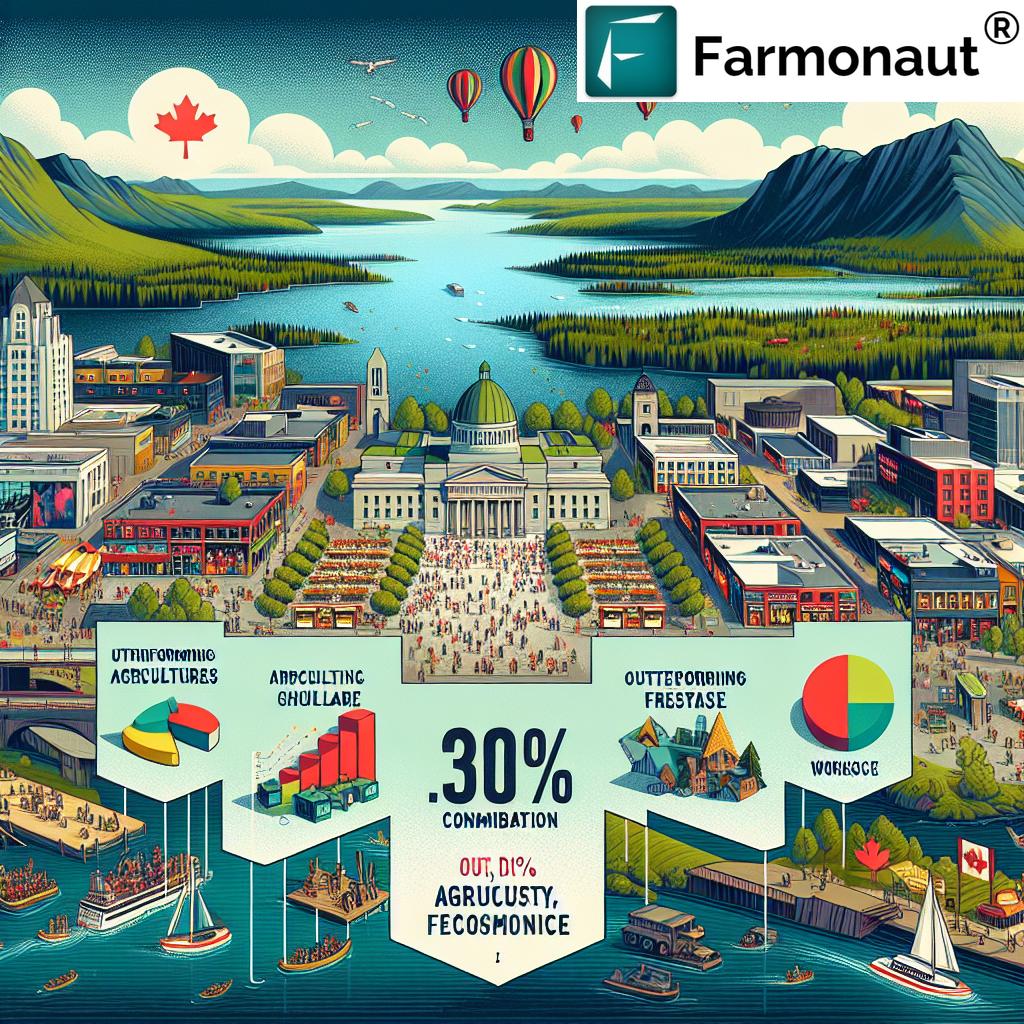Investing in Canadian Arts: Strengthening National Identity and Boosting Economic Growth by 2025
“Canada’s arts sector contributes more to GDP than agriculture, forestry, and fisheries combined, employing nearly 850,000 people.”
As we gather in Ottawa for the three-day Arts Summit, we, the 175 arts leaders from across Canada, stand united with a clear and resounding message: Canadian arts and culture are fundamental to our national identity, unity, and sovereignty. In the spirit of reconciliation with Indigenous peoples and embracing our nation’s diverse voices, we call for an unequivocal commitment to the arts sector.
Our summit comes at a crucial time, with an upcoming election where the essence of Canada’s unique sovereignty and cultural identity takes center stage. We firmly declare that our nation’s spirit, pride, and distinctiveness will never be subsumed. As the nation’s storytellers, we are uniquely positioned to strengthen and shape our national narrative.
The Vital Role of Canadian Arts and Culture
Canadian arts are not merely entertainment – they are the lifeblood of our collective identity. They invigorate our communities, foster enthusiasm for our nation, significantly strengthen our economy, and enhance our collective health and well-being. Recent reports from the Canada Council for the Arts highlight the profound impact of our sector:
- Nearly $60 billion annual contribution to Canada’s Gross Domestic Product (GDP)
- Employment of almost 850,000 Canadians – a workforce larger than agriculture, forestry, and fisheries combined
- For context, the combined GDP contribution of agriculture, forestry, and fisheries was approximately $42 billion
These figures underscore the economic powerhouse that is the Canadian arts and culture sector. Our impact extends far beyond creativity, touching every aspect of our nation’s prosperity and identity.

Economic Impact and Tourism Boost
The influence of the arts sector on Canada’s economy is multifaceted and far-reaching. According to Statistics Canada data, arts-related tourism significantly boosts local economies. Tourists attending arts events typically stay longer and spend considerably more, amplifying the economic benefits to communities across Canada.
This synergy between arts and tourism creates a powerful economic engine, driving growth in various sectors such as hospitality, transportation, and retail. The ripple effect of arts-related spending strengthens local businesses and contributes to the overall economic health of our communities.
| Sector | GDP Contribution (CAD Billions) | Employment (Thousands) | Tourism Revenue (CAD Millions) | Federal Funding (CAD Millions) | Return on Investment (ROI) % |
|---|---|---|---|---|---|
| Arts and Culture | 60 | 850 | 5,000 | 340 | 1,765% |
| Agriculture | 25 | 300 | 2,000 | 200 | 1,250% |
| Forestry | 10 | 200 | 1,000 | 100 | 1,000% |
| Fisheries | 7 | 150 | 800 | 80 | 875% |
Table: Economic Impact of Canadian Arts Sector (2025 Projection)
Arts and Business: A Powerful Partnership
The business sector increasingly recognizes the value of the arts as a catalyst for innovation, community engagement, and workforce well-being. Partnerships between arts organizations and Canadian businesses are growing, contributing to vibrant, creative communities and enhancing Canada’s competitive advantage on the world stage.
These collaborations foster creativity and innovation in the workplace, leading to increased productivity and employee satisfaction. By integrating arts into their corporate culture, businesses are finding new ways to solve problems, enhance team dynamics, and improve their overall performance.
The Call for Increased Federal Funding
“A $140 million boost to the Canada Council for the Arts is proposed to strengthen national identity by 2025.”
Investing taxpayer dollars in arts and culture yields attractive returns, benefiting the nation economically and socially. We explicitly request the federal government commit to approving the proposed $140 million increase in funding to the Canada Council for the Arts. This investment is crucial for several reasons:
- Protecting and celebrating Canadian cultural identity
- Fostering innovation and creativity across sectors
- Supporting the growth of arts-related tourism
- Enhancing Canada’s global reputation in the arts
While we acknowledge and applaud recent funding increases by provincial and municipal governments, we emphasize the need for robust, sustained federal leadership and investment. Additional programs beyond the Canada Council, including museums, galleries, festivals, and other cultural initiatives, are equally deserving of increased federal investment aligned with economic growth and adjusted for inflation.
A Call to Action for Political Leaders
As a sector that touches every Canadian and is at the heart of the identity we defend, the Summit issues this clear call to action to all political party leaders seeking our trust and votes: Commit unequivocally to this vision of a thriving, robust Canadian arts and culture sector.
Our next Prime Minister must demonstrate determination, focus, and caring by explicitly supporting these investments and recognizing that Canadian culture is essential to our national prosperity, sovereignty, and identity. This commitment should include:
- Approving the $140 million increase to the Canada Council for the Arts
- Developing a comprehensive national cultural policy
- Supporting initiatives that promote Canadian arts on the global stage
- Fostering partnerships between the arts sector and other industries

The Arts as a Catalyst for National Unity
Arts and culture reinforce Canada’s unity, resilience, and vitality. They serve as a powerful tool for bringing diverse communities together, fostering understanding, and celebrating our shared experiences. Through meaningful investments and support, we will protect and celebrate what makes us distinctively and proudly Canadian.
The arts have the unique ability to:
- Bridge cultural and linguistic divides
- Promote reconciliation with Indigenous peoples
- Showcase Canada’s diversity on the world stage
- Inspire critical thinking and social dialogue
By investing in the arts, we are investing in the very fabric of our society, strengthening the bonds that unite us as Canadians.
The Role of Technology in Advancing Canadian Arts
As we look towards 2025 and beyond, technology plays an increasingly vital role in the creation, distribution, and appreciation of Canadian arts and culture. Innovative solutions like carbon footprinting are helping cultural institutions and artists reduce their environmental impact, aligning with Canada’s commitment to sustainability.
Digital platforms and blockchain-based traceability systems are revolutionizing how we authenticate and preserve Canadian art, ensuring its legacy for future generations. These technologies also open new avenues for artists to reach global audiences, showcasing Canadian creativity on an international stage.
Fostering Innovation Through Arts Education
Investing in arts education is crucial for nurturing the next generation of Canadian innovators and creative thinkers. By integrating arts into STEM curricula (creating STEAM – Science, Technology, Engineering, Arts, and Mathematics), we can foster a more holistic approach to education that prepares students for the challenges of the future.
This approach not only enhances creativity and critical thinking skills but also aligns with the growing demand for interdisciplinary talents in the workforce. As industries evolve, the ability to think creatively and adapt to new challenges becomes increasingly valuable.
The Economic Ripple Effect of Arts Investment
The proposed $140 million increase in funding to the Canada Council for the Arts is not just an investment in culture; it’s an investment in Canada’s economic future. This funding has the potential to create a significant ripple effect across various sectors of the economy:
- Job Creation: Increased funding leads to more arts projects, creating jobs not only for artists but also for support staff, technicians, and administrators.
- Tourism Boost: A thriving arts scene attracts both domestic and international tourists, benefiting hotels, restaurants, and local businesses.
- Urban Revitalization: Arts districts and cultural centers can transform neighborhoods, increasing property values and attracting new businesses.
- Innovation Spillover: The creativity fostered in the arts sector often leads to innovations in other industries, driving economic growth.
Efficient management systems can help arts organizations maximize the impact of this funding, ensuring that resources are used effectively to create the greatest possible benefit for Canadian communities.
Preserving Canadian Heritage Through Digital Means
As we move towards 2025, the preservation and promotion of Canadian heritage through digital means become increasingly important. Advanced advisory systems can help cultural institutions manage and preserve their collections more effectively, ensuring that future generations can continue to learn from and be inspired by our rich cultural history.
Digital platforms also offer new ways to engage with Canadian art and culture, making it more accessible to people across the country and around the world. Virtual exhibitions, online performances, and interactive digital experiences can bring Canadian culture to life in new and exciting ways, breaking down geographical barriers and reaching wider audiences.
The Role of Arts in Canada’s International Relations
Canadian arts and culture play a crucial role in shaping our nation’s image on the global stage. They serve as powerful tools of cultural diplomacy, fostering international understanding and collaboration. By investing in our arts sector, we are not only strengthening our national identity but also enhancing Canada’s soft power and influence in the international community.
Key aspects of this international impact include:
- Cultural Exchanges: Promoting Canadian artists abroad and hosting international artists in Canada
- Film and Television: Supporting the production and distribution of Canadian content globally
- Literature and Publishing: Encouraging the translation and promotion of Canadian literature in foreign markets
- Visual Arts: Facilitating the exhibition of Canadian art in prestigious international galleries and museums
These efforts not only showcase Canadian creativity but also open doors for economic opportunities and diplomatic relationships.
Conclusion: A Vision for Canada’s Cultural Future
As we stand at this pivotal moment in Canadian cultural policy, the path forward is clear. Investing in Canadian arts and culture is not just about preserving our heritage; it’s about shaping our future. It’s an investment in our economy, our communities, and our national identity.
We call on all Canadians to join us in advocating for increased support for the arts. Let us embrace this opportunity to strengthen our nation through creativity, innovation, and cultural expression. Together, we can ensure that Canadian arts and culture continue to thrive, inspire, and define who we are as a nation.
By committing to this vision of a robust, well-funded arts sector, we are investing in a brighter, more vibrant future for all Canadians. Let our collective voice be heard as we champion the arts as a cornerstone of Canadian identity, prosperity, and global influence.
FAQ Section
- Q: Why is investing in Canadian arts important for national identity?
A: Investing in Canadian arts strengthens our national identity by showcasing our diverse cultural voices, preserving our heritage, and fostering a shared sense of Canadian pride and unity. - Q: How does the arts sector contribute to Canada’s economy?
A: The arts sector contributes nearly $60 billion annually to Canada’s GDP, employs almost 850,000 people, and significantly boosts tourism and local economies. - Q: What is the proposed funding increase for the Canada Council for the Arts?
A: The proposal calls for a $140 million increase in funding to the Canada Council for the Arts to support and grow the sector. - Q: How do arts and culture support Canada’s international relations?
A: Canadian arts and culture serve as tools of cultural diplomacy, enhancing our global image, fostering international understanding, and opening doors for economic and diplomatic opportunities. - Q: What role does technology play in advancing Canadian arts?
A: Technology is crucial in creating, distributing, and preserving Canadian arts, offering new platforms for engagement and helping reduce the environmental impact of cultural institutions.
Earn With Farmonaut: Affiliate Program
Earn 20% recurring commission with Farmonaut’s affiliate program by sharing your promo code and helping farmers save 10%. Onboard 10 Elite farmers monthly to earn a minimum of $148,000 annually—start now and grow your income!
API Developer Docs: Farmonaut API Documentation




















